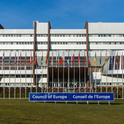Why did European societies, rather than those of the Fertile Crescent, China or India, colonise America and Australia, take the lead in technology, and become politically and economically dominant in the modern world? It is one of the great puzzles of modern history and a profound test for any historical method which claims to address such big questions.
In my view, the enormous divergence in human fortunes can best be explained by considering natural resources, rather than biology. Those regions endowed with the largest number of domesticable animals and plants, and with locations or shapes most conducive to cultural innovation, gained a permanent lead over the others and, in many cases, subjugated them with their superior technology. But how can this type of historical explanation account for the ascendancy of Europe?
A historian who had lived at any time between 8500 BC and AD 1450, and who had tried then to predict future trajectories, would surely have labelled Europe's eventual dominance as one of the least likely outcomes. From 8500 BC until the rise of Greece and then Italy after 500 BC, almost all major innovations in western Eurasia-animal domestication, plant domestication, writing, metallurgy, the wheel, the state-arose in or near the Fertile Crescent. Until the spread of water mills after about AD 900, Europe west or north of the Alps contributed nothing of significance to old world technology or civilisation; it was instead a recipient of developments from the eastern Mediterranean, Fertile Crescent and China. Even from AD 1000 to 1450 the flow of science and technology was predominantly into Europe from the Islamic societies stretching from India to North Africa. During those same centuries China led the world in technology, having launched itself on food production as early as the Fertile Crescent did.
Why, then, did the Fertile Crescent and China eventually lose their enormous leads to late-starting Europe? There are many factors behind Europe's rise: its development of a merchant class, capitalism, and patent protection for inventions; its failure to develop absolute despots and crushing taxation; and its Greco-Judeo-Christian tradition of critical empirical inquiry. Still, for all such proximate causes one must raise the question of ultimate cause: why did these factors arise in Europe, rather than in China or the Fertile Crescent?
For the Fertile Crescent the answer is clear. Once it had lost the head start that it had enjoyed thanks to its locally available concentration of domesticable wild plants and animals, the region possessed no further compelling geographic advantages. The disappearance of that head start can be traced through the westward shift in powerful empires. After the rise of the Fertile Crescent states in the 4th millennium BC, the centre of power initially remained there, rotating between empires such as those of Babylon, the Hittites, Assyria and Persia. With the Greek conquest of all advanced societies from Greece to India under Alexander the Great in the late 4th century BC, power made its first irrevocable shift westward. It shifted further west with Rome's conquest of Greece in the 2nd century BC; after the fall of the Roman Empire it moved again, to western and northern Europe.
The main factor behind these shifts becomes obvious as soon as one compares the modern Fertile Crescent with ancient descriptions of it. Now the term "Fertile Crescent" seems absurd to describe an area which is desert, semi-desert, or heavily eroded terrain unsuited for agriculture. Its ephemeral wealth, based on the single non-renewable resource of oil, conceals the region's long standing poverty.
In ancient times, however, much of the Fertile Crescent and eastern Mediterranean region, including Greece, was covered with forest. Its transformation from fertile woodland to eroded scrub or desert has been unravelled by palaeobotanists and archaeologists. Its woodland was cleared for agriculture, cut for timber or burned as firewood. Low rainfall and hence low primary productivity meant that vegetation was destroyed faster than it could grow, especially in the presence of overgrazing by goats. With the tree and grass cover removed, erosion proceeded and valleys silted up, while irrigation agriculture in the low-rainfall environment led to salt accumulation. These processes which began in the Neolithic era continued into modern times. The last forests near the ancient Nabataean capital of Petra, in Jordan, were felled by the Ottoman Turks during construction of the Hejaz railroad just before the first world war.
Thus, Fertile Crescent and eastern Mediterranean societies had the misfortune to arise in a fragile environment. They committed ecological suicide by destroying the balance on which fertility depended. Power shifted westward as each Mediterranean society in turn undermined itself, beginning with the oldest societies in the east. Northern and western Europe has been spared this fate, not because its inhabitants have been wiser but because they have had the good luck to live in a more robust environment with higher rainfall, in which vegetation regrows quickly. Seven thousand years after the arrival of food production, much of northern and western Europe is still able to support intensive agriculture. In effect, Europe received its crops, livestock, technology and writing systems from the Fertile Crescent, which then gradually eliminated itself as the main centre of power and innovation.
why did china also lose its lead? Its falling behind is initially surprising. China enjoyed undoubted advantages: a rise in food production nearly as early as the Fertile Crescent; ecological diversity from north to south China and from the coast to the high mountains of the Tibetan plateau, giving rise to a dense set of crops, animals and technology; a large and productive expanse, nourishing the largest regional human population in the world; and a wetter climate and less fragile ecology than that of the Fertile Crescent. After nearly 10,000 years, China still supports intense productive agriculture although its envir-onmental problems are increasing today and are more serious than those of Europe.
These advantages enabled medieval China to lead the world in technology. Its long list of technological inventions includes cast iron, the compass, gunpowder, paper and printing. China also led the world in political power, navigation and control of the seas. It sent treasure fleets, each consisting of hundreds of ships up to 400 feet long and with crews of up to 28,000, across the Indian Ocean as far as the east coast of Africa, several decades before Columbus's three puny ships crossed the narrow Atlantic Ocean to the Americas' east coast in 1492. Why then did Chinese ships not proceed around Africa's southern cape westward and colonise Europe, before Vasco da Gama's three ships rounded the Cape of Good Hope eastward and launched Europe's colonisation of east Asia? Why did Chinese ships not cross the Pacific to colonise the Americas' west coast?
The end of China's treasure fleets gives us a clue. Seven of those fleets sailed from China between 1405 and 1433. They were then suspended as a result of an aberration of local politics: a power struggle between the eunuchs and their opponents at the Chinese court. The former faction had been identified with sending and captaining the fleets, so when the latter gained the upper hand, it stopped sending fleets, dismantled the shipyards and forbade ocean-going shipping. The episode is reminiscent of the legislation that strangled development of public electric lighting in London in the 1880s, the isolationism of the US between the first and second world wars and any number of backward steps motivated by local political squabbles. But in China there was a difference: the entire region was politically unified. That one decision stopped fleets over the whole of China. And, because no shipyards remained, it proved irreversible.
Now contrast those events in China with what happened when fleets of exploration began to sail from politically fragmented Europe. Christopher Columbus, an Italian by birth, switched his allegiance to the duke of Anjou in France, then to the king of Portugal. When the latter refused his request for ships with which to explore westward, Columbus turned to the duke of Medina-Sedonia, who also refused, then to the count of Medina-Celi, who did likewise, and finally to the king and queen of Spain, who denied Columbus's first request but eventually granted his appeal. Had Europe been united under any one of the first three rulers, its colonisation of the Americas might have been stillborn.
In fact, precisely because Europe was fragmented, Columbus succeeded on his fifth try in persuading one of Europe's hundreds of princes to sponsor him. Once Spain had launched the European colonisation of America, other European states saw the wealth flowing into Spain, and six more joined in colonising America. The story was the same with Europe's cannon, electric lighting, printing and small firearms: each was at first neglected or opposed in some parts of Europe for idiosyncratic reasons, but once adopted in one area it eventually spread to the rest of Europe.
These consequences of Europe's disunity stand in sharp contrast to those of China's unity. From time to time the Chinese court decided to halt other activities besides overseas navigation: it abandoned development of an elaborate water-driven spinning machine, stepping back from the verge of an industrial revolution in the 14th century; virtually abolished mechanical clocks after leading the world in clock construction; and retreated from mechanical devices and technology in general after the late 15th century. Those potentially harmful effects of unity have flared up again in modern China, notably during the madness of the cultural revolution in the 1960s and 1970s, when a decision by a few leaders closed the country's school system for five years.
China's frequent unity and Europe's perpetual disunity both have a long history. The most productive areas of modern China were politically joined for the first time in 221 BC and have remained so for most of the time since then. China has had a single writing system from the beginnings of literacy, a single dominant language for a long time, and substantial cultural unity for 2,000 years. In contrast, Europe has never come close to political unification. Still splintered into 1,000 independent statelets in the 14th century, into 500 statelets in 1500, reduced to a minimum of 25 states in the 1980s, these have increased again to nearly 40 at the time of writing. Europe still has 45 languages, and even greater cultural diversity. The disagreements that continue to frustrate even modest attempts at European unification through the EU are symptomatic of Europe's ingrained commitment to disunity.
To understand China's loss of political and technological pre-eminence to Europe we must understand why China has remained united, and Europe fragmented. Maps provide the clue. Europe has a highly indented coastline, with five large peninsulas that are island-like in their isolation, and all of which evolved independent languages, ethnic groups and governments: Greece, Italy, Iberia, Denmark and Norway/Sweden. China's coastline is much smoother, and only the nearby Korean peninsula attained separate importance. Europe has two islands (Britain and Ireland) large enough to assert their political independence and maintain their own languages and ethnicities. Indeed one is big and close enough to become a major independent European power. China's two largest islands, Taiwan and Hainan, are each less than half the area of Ireland; neither was an independent power until Taiwan's emergence in recent decades. Japan's geographic distance from the Asian mainland kept it much more isolated politically than Britain has been from main-land Europe. Europe is carved up into independent linguistic, ethnic and political units by high mountains (the Alps, Pyrenees, Carpathians and Norwegian border mountains), while China's mountains east of the Tibetan plateau are less formidable barriers. China's heartland is bound together by two long navigable river systems in rich alluvial valleys (the Yangtze and Yellow rivers), and it is joined from north to south by relatively easy con-nections between these two river systems. As a result, China very early became dominated by two huge geographic core areas of high productivity, which gradually fused into one. Europe's two biggest rivers, the Rhine and Danube, are shorter and connect less of Europe. Unlike China, Europe has many scattered "core" areas, none big enough to dominate the others for long, and each the centre of an independent state.
Once China was unified, in 221 BC, no other independent state ever had a chance of persisting for long. Although periods of disunity occurred after that date, they always ended in reunification. But the unification of Europe has resisted the efforts of such determined conquerors as Charlemagne, Napoleon and Hitler; even the Roman Empire at its peak never controlled more than half of Europe's area.
Thus, geographic connectedness and only modest internal barriers gave China an initial advantage. North China, south China, the coast and the interior contributed different crops, livestock, technologies and cultural features to the eventually unified China. Millet cultivation, bronze technology and writing arose in the north, while rice cultivation and cast-iron technology emerged in the south. But China's connectedness eventually became a disadvantage, because a decision by one despot could, and repeatedly did, halt innovation. In contrast, Europe's geographic balkanisation resulted in hundreds of independent, competing statelets and centres of innovation. If one state did not pursue some particular innovation, another did, forcing neighbouring states to do likewise or else be conquered or left economically behind. Europe's barriers were sufficient to prevent political unification, but insufficient to halt the spread of technology and ideas. There has never been one despot who could turn off the tap for all of Europe, as in China.
Geographic connectedness has exerted both positive and negative effects on the evolution of technology. In the long run, technology may develop most rapidly in regions with moderate connectedness, neither too high nor too low. Technology's course over the past 1,000 years in China, Europe and the Indian subcontinent exemplifies the effects of high, moderate and low connectedness, respectively.
Other factors contributed to history's diverse courses in different parts of Eurasia. The Fertile Crescent, China and Europe differed in their exposure to the perennial threat of barbarian invasions by horse-riding pastoral nomads of central Asia. One of those nomad groups (the Mongols) destroyed the ancient irrigation systems of Iran and Iraq, but none of the Asian nomads ever succeeded in establishing themselves in the forests of western Europe beyond the Hungarian plains. Geographic factors also include the Fertile Crescent's "crossroad" location, controlling the trade routes linking China and India to Europe, and China's distance from Eurasia's other advanced civilisations. This relative isolation is especially relevant to its adoption and then rejection of technologies.
Is this environmental and geographical determinism becoming irrelevant in the modern world, now that ideas diffuse instantly on the internet and cargo is routinely air freighted overnight between continents? It might seem that entirely new rules apply to competition between the world's peoples, and that as a result new powers are emerging-such as Taiwan, Korea, Malaysia and Japan.
On reflection, though, we can see that the supposedly new rules are just variations on the old ones. Yes, the transistor, invented at Bell labs in the eastern US in 1947, launched an electronics industry in Japan 8,000 miles away-but it did not found new industries in Zaire or Paraguay. Today's rising nations are ones that were incorporated thousands of years ago into the old centres of dominance based on food production, or that have been repopulated by peoples from those centres. Unlike Zaire or Paraguay, Japan and the other new powers were able to exploit the transistor quickly because their populations already had a long history of literacy, metal machinery and centralised government. The world's two earliest centres of food production, the Fertile Crescent and China, still dominate the modern world, either through their immediate successor states (modern China), or through states situated in neighbouring regions influenced early by those two centres (Japan, Korea, and Europe), or through states repopulated or ruled by their overseas emigrants (the US, Australia, Brazil). Prospects for world dominance by sub-Saharan Africans, aboriginal Australians and native Americans remain dim. The hand of history's course at 8000 BC lies heavily on us.
Disunity is strength
Geography, not biology ultimately accounts for the ascendancy of Europe in the modern world. Its fragmented terrain prevented political unity and provided the competition which gave it the lead over the Fertile Crescent, China and India
July 19, 1997











